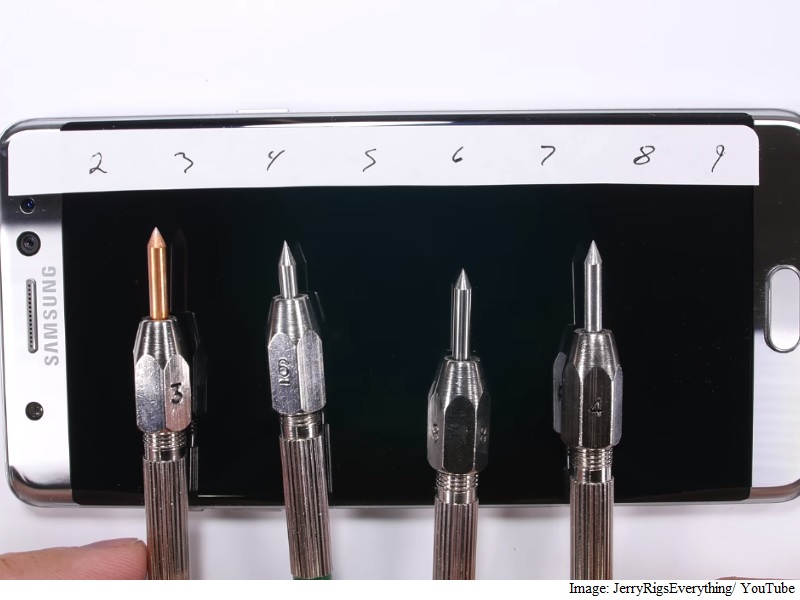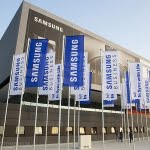
Although Samsung Galaxy Note 7 is receiving heaps of praises and approval from reviewers around the globe, one jarring feedback came for the company in the form of a display scratch resistance test by YouTuber JerryRigEverything that found it to be quite prone to scratches. Corning, which provides the Gorilla Glass 5 display protection on the Galaxy Note 7, has come forward to address the report.
In the aforementioned video, posted last week, the JerryRigEverything’s Zack demonstrates how the Gorilla Glass 5 present on Samsung Galaxy Note 7 gets scratched by a metal pick that rates 3 on Mohs scale of hardness. This was particularly shocking as Gorilla Glass 4, which is present on all of Samsung’s earlier phones did not get scratches up to the mark of 5 or 6 Mohs. In reply to this scratch test, as expected, Corning has questioned the tests performed in the video.
Corning’s Vice President of Technology Jaymin Amin told Android Authority, “The test that was conducted in the video is obviously not a bonafide industry test. It’s using Mohs hardness picks but it’s in an uncontrolled manner. We also don’t know a whole lot about what loads the person has used. Whether those loads are changing as he goes through the testing.”
Corning claims that Gorilla Glass 5 present on Galaxy Note 7 falls in Moh’s hardness range of 5-6 and technically a metal pick with hardness of level 3 cannot scratch the glass.
“The glass is designed to improve the drop performance and not necessarily designed to improve the scratch performance,” Amin added. He said based on company’s testing, for scratch performance, Corning believes that Gorilla Glass 5 should be performing “similarly” to Gorilla Glass 4. When pressed further by publication, Amin confirmed that Gorilla Glass 5 is at least as scratch resistant as its predecessor.
Amin elaborated that it’s possible the ‘scratches’ seen in the video may actually be material transference, with metallic material from the Mohs 3 pick actually being transferred on the harder display – leaving marks that are hard to remove and seemingly indistinguishable from scratches. How this knowledge helps the end user remains to be seen, as they’d still be affected by scratches – regardless of the provenance.
“The hardness pick that was used in the video was a 3, that’s considerably softer than the glass material. Oftentimes when you have a softer material like that, and depending on what kind of loads you have used, you tend to see material transfer on the test substrate… Material transfer on the test substrate is not necessarily a scratch but it can appear to the untrained eye as a pretty visible scratch. We don’t know whether or not that is what is being seen in the video. Certainly in the testing we’ve done internally, we don’t see that issue at all with similar picks on the Mohs hardness scale,” Amin explained.
In the meanwhile, Corning Business Technical Director for Gorilla Glass Jon Pasansky put to rest speculation that by increasing the drop/shatter resistance of Gorilla Glass 5, Corning had compromised on the scratch resistance, “There might be a misconception in the thought process [about shock absorbency and flexibility]. What we’ve done with GG5 is designed to maximize the damage resistance of the glass itself. What that does is provide additional resistance to the flaws that get introduced during drop events and provide additional retained strength during those drop events so you can have higher drop performance… That’s slightly different than thinking about it from a shock absorbance or flexibility perspective. It’s actually more about preventing flaws in glass, which is a brittle material, not about making a soft, shock absorbing material.”
Corning unveiled its Gorilla Glass 5 last month and claimed that the Corning Gorilla Glass 5 in its internal lab tests survived up to 80 percent of the time when dropped face-down from up to 1.6 metres.
[“source-gadgets.ndtv”]










